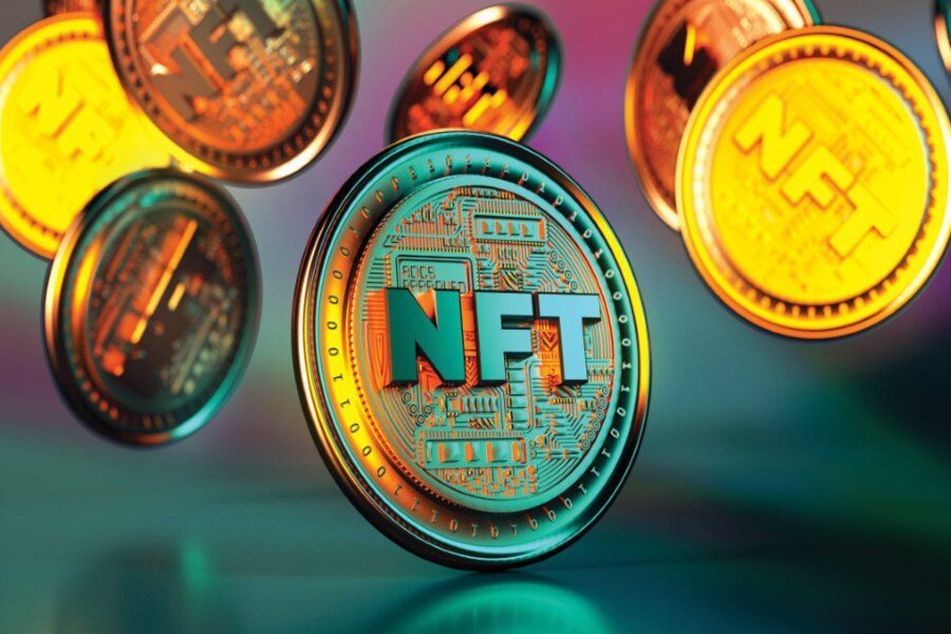Nonfungible tokens held in IRAs can trigger big tax hit

If clients are holding NFTs in their individual retirement accounts, review them to see which tokens are acceptable assets and which may be deemed a collectible under IRS guidance.
Nonfungible tokens, or NFTs, may trigger unexpected taxes and penalties if they’re held in an individual retirement account, the IRS said in a notice issued in March.
IRA funds can be invested in anything except these prohibited investments:
- Collectibles.
- Life insurance.
- S Corp. stock.
The IRS guidance focuses on whether NFTs are considered collectibles, which have always been a prohibited IRA investment. Under Tax Code § 408(m)(2), the term “collectible” means:
- Any work of art.
- Any rug or antique.
- Any metal or gem.
- Any stamp or coin.
- Any alcoholic beverage.
- Any other tangible personal property specified by the IRS.
However, there’s an exception for coins issued under state law and certain gold, silver, platinum or palladium bullion. These are not considered a collectible, so they’re not a prohibited IRA investment. However, they still must be held by an IRA custodian, and can’t be held by the IRA owner at home, for example.
In fact, back in November 2021, a U.S. Tax Court case showed the steep risks to retirement savings of holding gold coins at home. In that case, Donna McNulty, a Rhode Island nurse, lost it all when the Tax Court held her self-directed IRA investment in gold coins that she kept in her possession at home was a taxable distribution. This cost her more than $300,000 in taxes and penalties.
Learn the most tax-efficient ways to own gold here.
While the above list of collectibles doesn’t include NFTs specifically, the IRS says certain NFTs may now be included if they’re linked to a collectible. That could raise serious and expensive tax issues for clients who may be holding NFTs in their IRAs.
If a collectible (or any other prohibited investment) is held in an IRA, the original cost will be treated as a taxable distribution from the IRA. In addition, a 10% early distribution penalty will apply if the IRA owner is under 59½ years old. The key here is that the distribution amount is based on the original cost, even if the asset has decreased in value. (It’s not clear how the IRS intends to apply this rule for an NFT in an IRA that is considered a collectible under the new guidance but was purchased prior to issuance of the notice.)
In a separate publication, IRS Publication 590-A, the IRS says that a collectible doesn’t need to be withdrawn from the IRA once a deemed distribution on the investment occurs. The publication states that when the NFT is actually distributed from the IRA, any amounts that were already included in income as a result of the deemed distribution won’t be included again in income. In other words, the IRA owner will get credit for basis to the extent the original cost was treated as being distributed.
Example 1: Joe, 45, invested $200,000 of his traditional IRA funds in an NFT when they were all the rage. The NFT is linked to ownership rights to a collectible. But now the NFT turns out to be worthless. Joe will owe tax on the full $200,000 (plus a 10% penalty), even though the value is zero! Ouch. That’s a double hit: first the loss of the funds, and then paying tax on value that no longer exists.
ROTH IRA EFFECT
NFTs in Roth IRAs may be more common since investors who believe their NFTs will substantially appreciate will want those gains to be free from income tax.
If the Roth IRA NFT is deemed to be a collectible, the investment in the NFT wouldn’t be a taxable distribution if the distribution is “qualified” (i.e., the investment is made after any of the owner’s Roth IRAs have been held for at least five years and when the IRA owner is at least 59½).
Example 2: Joe’s older brother, Pete, who’s 60, invested his Roth IRA funds in an NFT considered a collectible. Pete will still be subject to a deemed distribution on his investment, but there will be no income tax since the deemed distribution is on a Roth IRA NFT investment (assuming the distribution is qualified).
Instead of the NFT becoming worthless, what happens if the NFT value increases, say to $1 million, when Pete actually distributes it out of the Roth IRA? It appears that Pete won’t owe taxes on the $800,000 gain either. In other words, the usual Roth IRA tax advantages aren’t lost even though the Roth is invested in a prohibited investment.
Hopefully, most clients aren’t investing their IRA funds in NFTs, but there must be enough of this going on for the IRS to issue guidance on it.
NFT LOOK-THROUGH RULES
NFTs can provide the holder the right to a digital file that may be an image, music, trading card or a digital sports moment, to name a few examples. Or an NFT can provide the holder the right to attend a concert or certify ownership of a certain item.
Not all NFTs in IRAs will trigger a deemed distribution. The IRS states in its guidance that you must look through the NFT to see whether the right or asset is associated with a collectible.
The IRS provides examples where the NFT would be deemed a collectible and a prohibited IRA investment resulting in a deemed distribution based on the original cost. This would be the case where the NFT looks through to rights or ownership of a gem or a work of art (both collectibles). The notice also has an example where the NFT is not considered a collectible when it provides a right to use or develop a plot of land. Since land is an acceptable IRA investment, the NFT won’t cause a tax problem.
PROHIBITED TRANSACTION RISK
The tax damage could get even worse. The IRS points out that if an NFT in an IRA is deemed to be a collectible, the IRA NFT can cause a prohibited transaction, as well as a deemed distribution on the investment. That would be the case if the IRA owner uses the property for his own interest. In this situation, the tax consequences will be much worse since the entire IRA will be disqualified and be deemed distributed as of the first day of the year the prohibited transaction occurred. This is much worse than a deemed distribution of only the cost of the NFT.
Example 3: Mary invests $300,000 of her $2 million IRA in an NFT. The NFT certifies ownership of a rare gem, which is a prohibited IRA investment. Because the NFT is a collectible, the $300,000 investment would be a taxable deemed distribution in the year of investment. Mary then lends the gem to a museum and receives compensation in return. That’s a prohibited transaction since Mary is using the gem personally in her own interest. In that case, the entire $2 million IRA is disqualified and taxable to Mary as a distribution from her IRA (minus the $300,000 basis from the deemed distribution on the original investment). In addition to the tax on the prohibited transaction, if Mary was under age 59½ at the time it occurred, she would also be subject to a 10% early distribution penalty.
These are extreme tax outcomes. While NFTs are relatively new, the IRS is on top of these as IRA investments.
It should be noted that this is the first salvo from IRS. The notice states that IRS is open to comments on the issue and intends to issue more guidance. However, these will be the rules for now.
GETTING THE WORD OUT
Advisors should get the word out to any clients who already have NFTs in their IRAs or are considering doing so and advise them of this guidance.
If clients are holding NFTs in their IRAs, review them to see which NFTs are acceptable assets to hold in an IRA and which may be deemed a collectible under this IRS guidance. If the NFT is considered a collectible, warn clients about a taxable deemed distribution on the original investment and potential prohibited transaction exposure if the rights to the NFT are used personally. Be very careful here!
For more information on Ed Slott and Ed Slott’s 2-Day IRA Workshop, please visit www.IRAhelp.com.
Tax rates will rise, so convert to a Roth IRA ASAP, says Ed Slott
Learn more about reprints and licensing for this article.








